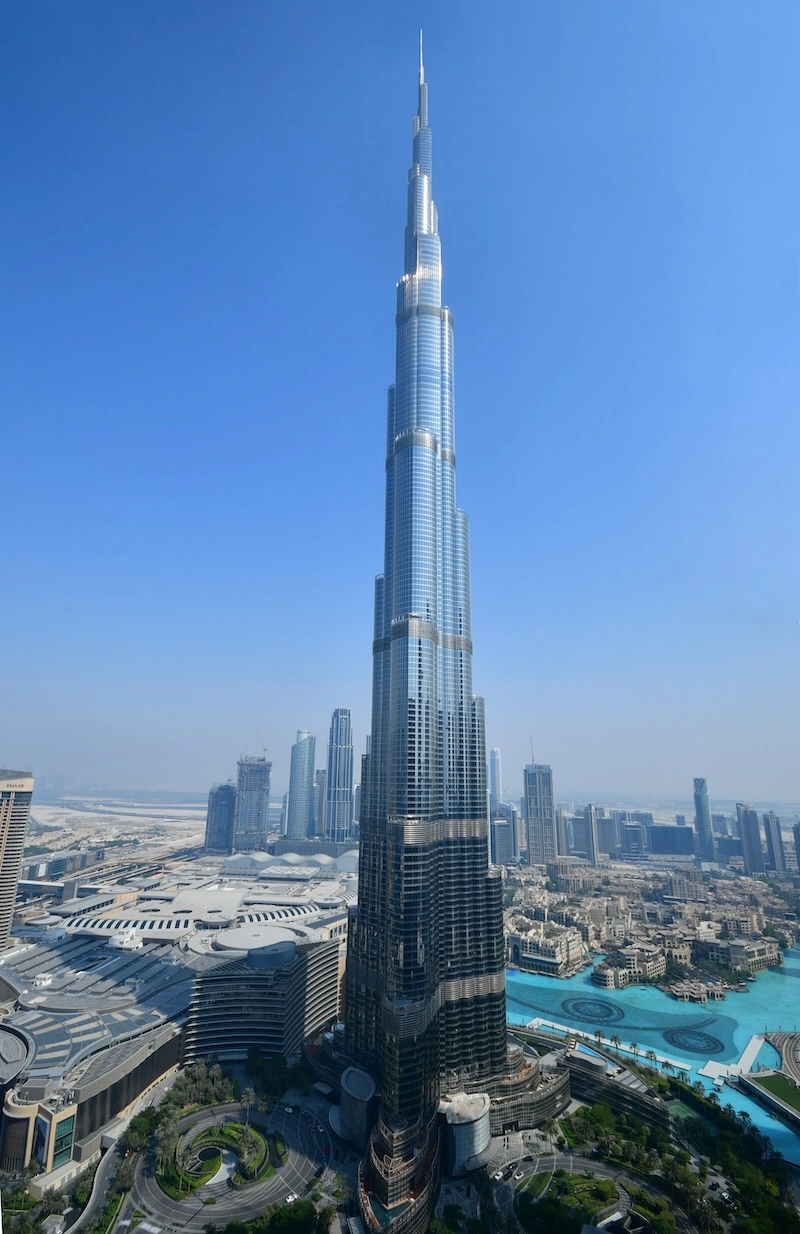Last week I was in Guadalajara visiting several companies in the construction sector. Between meetings, presentations and works in progress, I had to go up and down many elevators. And in one of those, while waiting in silence, I had a question that I'm sure many of us have had:
How do elevators really work in such tall buildings?
That curiosity led me, a few days later, to see a documentary about the construction of the tallest building in the world: the Burj Khalifa in Dubai. And that's where everything connected. Because if there's a challenge almost as big as lifting 828 meters of concrete and steel, so is getting people up and down safely, quickly and efficiently... every day.
And what I learned, I'll share with you.
The challenge: how to climb 163 floors without going crazy (or waiting forever)?

In common buildings, a single elevator can run from the ground floor to the top floor. But in a tower like the Burj Khalifa, that's not only impractical... it's Impossible.
The problem is both physical and mechanical: the steel cables that pull the elevator weigh too much. At a certain height, the weight of the cable itself becomes a limit. Add to that the energy required, the waiting time and the number of people who move in a building with apartments, offices, hotels and viewpoints.
The solution: level engineering, transfers and extreme speed
To solve this challenge, the design and engineering team (led by Otis Elevator Company) implemented a combination of brilliant solutions:
1. System of zones with transfers (such as a vertical meter)
The Burj Khalifa doesn't have a single elevator that goes from floor 0 to 163. Instead, they divided it into vertical zones.
Each elevator group serves a stretch of floors (for example, from 0 to 43, from 43 to 76, etc.).
To change areas, you transfer to Sky Lobby Levels, as if you were taking an express elevator to half a tower, and from there you change to another one that goes higher.
It's like a vertical public transport system. Optimizes time, reduces engine load and avoids long waits
2. Speeds that impress
One of the fastest elevators in the Burj Khalifa can go up to 10 meters per second (36 km/h).
That's more than double what is handled in high-rise buildings in Mexico.
At that speed, you can go up from floor 0 to 124 in Less than a minute.
So quickly that they had to install special systems to avoid discomfort from the change in pressure in the ears.
3. Double elevators: two cabins on the same axle
The Burj Khalifa was one of the first buildings in the world to use double cab elevators:
Two elevators mounted one above the other that move synchronously.
This doubles the transport capacity without taking up more space in the core of the building.
4. Earthquake and evacuation technology
Although Dubai is not in a critical seismic zone, elevators have shock absorbers, intelligent sensors and systems that allow safe descents in case of emergency.
Even some elevators are designed to help with evacuations, something unthinkable in many other countries.
And the cables? Weren't they the problem?
Yes... and no.
Although cables are still an issue, the Burj Khalifa uses advanced traction systems and lighter materials. Experiments also began with wireless systems (such as ThyssenKrupp's MULTI), but at that time the most innovative thing was to distribute the load using multiple machines and independent areas.
.webp)
Conclusion: An elevator doesn't just go up... it also tells an engineering story
After learning all this, you never see an elevator like that again. Every button, every door that opens, every silent journey between floors... is the result of decades of innovation.
In the case of the Burj Khalifa, elevators weren't just a complement to the design. They were a central part of making the building work.
And the next time you hop on one, you might ask yourself:
How many engineering secrets are there behind this simple routine?

